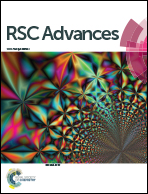Flexible and high-performance piezoresistive strain sensors based on multi-walled carbon nanotubes@polyurethane foam
Abstract
Flexible wearable pressure sensors have attracted special attention in the last 10 years due to their great potential in health monitoring, activity detection and as electronic skin. However, it is still a great challenge to develop high sensitivity, fast response, and good reliable stability through a simple and reproducible large-scale fabrication process. Here, we develop a simple and efficient method to fabricate three-dimensional (3D) light-weight piezoresistive sensing materials by coating multi-walled carbon nanotubes (MWCNTs) on the surface of polyurethane (PU) foam using a dip-spin coating process. The PU foam prepared with SEBS-g-MAH and polyether polyols has high elasticity and good stability in MWCNTs/DMF solution. Subsequently, a piezoresistive sensor was assembled with the prepared MWCNTs/PU composite foam and copper foil electrodes. The assembled pressure sensor has high sensitivity (62.37 kPa−1), a wide working range (0–172.6 kPa, 80% strain), a fast response time (less than 0.6 s), and reliable repeatability (≥2000 cycles). It has shown potential application in real-time human motion detection (e.g., arm bending, knee bending), and monitoring the brightness of LED lights.



 Please wait while we load your content...
Please wait while we load your content...